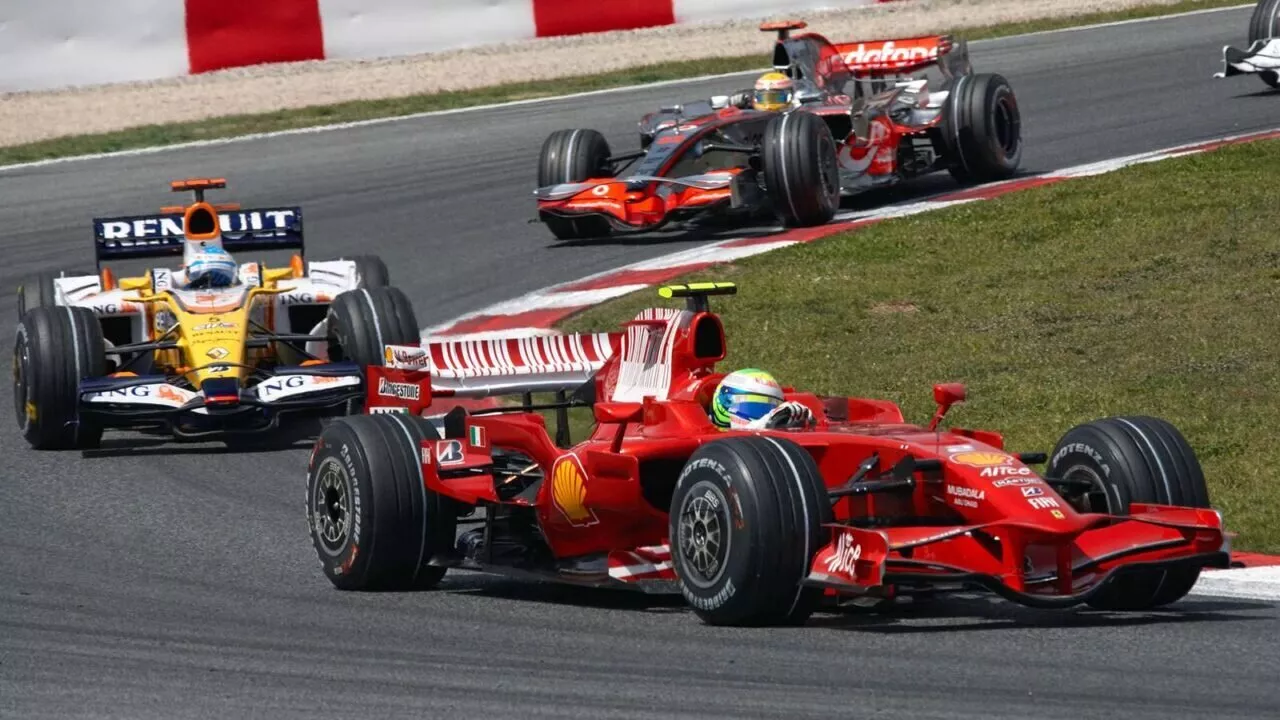Formula 1: Key difference between Safety car and Virtual Safety car in F1

(Courtesy : The Sun)
We take a look at how the FIA implements damage control systems to deal with on-track incidents.
The sport of Formula 1 thrives on extremely fast-paced cars, and with their speed comes the dreaded risks of accidents. Even after so many years, on-track incidents are prevalent. With its evolution of over 80 years, the safety measurements have significantly improved to make the drivers' welfare a prime concern.
When we talk about on-track incidents, there are two events that the race control generally implements to control the damage without red-flagging the ongoing race. First, the FIA attempts to reduce the cars' pace from 200+MPH and then regulates their grid order while the marshalls attend to the on-track incident. The second is about what decision would work best, considering the magnitude of the incident.
Either race control will implement a virtual or full safety car, depending on the seriousness of the event in question. Under both conditions, the racing drivers need to stop racing and maintain their speed within a limit. Every team has to adhere to the safety car instructions strictly.
Safety car and Virtual safety car

The safety car comes out under significant obstacles, multiple crashes, debris, or damages on the track from an accident. Clearing the mess becomes critical. Drivers should stop racing and overtaking by maintaining grid order while reducing their speed in driving behind the safety car.
It develops a close pack of F1 cars. It can also get introduced if the weather conditions become unsuitable for racing. It laps around until the weather improves or the business is taken care of by restoring the track to its normal state.
The virtual safety car is a relatively newer concept. It is for less critical incidents. For example, when there is a mechanical failure, the cars are forced to stop abruptly in the middle. Drivers get told to maintain a delta pace. It means reducing their pace by 30%-40% from their normal speed.
Under regular SC, the cars bunch up and follow each other closely behind the safety car. However, for a virtual safety car, maintaining delta time becomes a vital factor.
Where passion meets insight — blending breaking news, in-depth strategic analysis, viral moments, and jaw-dropping plays into powerful sports content designed to entertain, inform, and keep you connected to your favorite teams and athletes. Expect daily updates, expert commentary and coverage that never leaves a fan behind.
- Formula 1’s highest-paid drivers in 2025 REVEALED
- F1 2026 Regulations Explained: Biggest Technical Overhaul in Formula 1 History
- Formula 2 2026: Kush Maini joins ART Grand Prix for his fourth F2 season
- Formula 4 Indian Championship: Battle for title set to unfold in high-stakes Chennai season finale
- Formula 1: Six instances Drivers' Championship was decided in last race
- Formula 1: Top six drivers with most wins at Abu Dhabi GP
- Lando Norris’ complete record at F1 Abu Dhabi GP
- F1 Abu Dhabi GP 2025: Preview, weather, schedule, start time, how to watch & more
- Formula 1 Title Scenarios: What Lando Norris, Max Verstappen & Oscar Piastri need to win F1 title in Abu Dhabi?
- Formula 1: List of Indians who have been part of F1 in various capacities